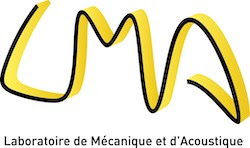Organizing Committee
Comité d’organisation
Philippe Briet (CPT)
Maxence Cassier (Institut Fresnel)
Thomas Ourmières-Bonafos (I2M)
Spectral theory is concerned with the mathematical properties of linear operators through the study of their spectra and eigenelements. It has emerged as a key area of mathematics for the precise analysis of both quantum and classical wave phenomena, in the context of acoustic, electromagnetic or mechanical wave propagation. It is therefore a key mathematical tool in the understanding of many physical phenomena.
In both classical and quantum physics, the engineering development of materials with increasingly complex physical properties (e.g. metamaterials, topological insulators, etc.) or geometrical properties (e.g. waveguides or curved optical fibers) raises important new questions in this area of mathematics, in order to model wave propagation in such media. What’s more, these “new materials” have numerous application challenges.
The main aim of this thematic day is to benefit from the interdisciplinarity of researchers from the laboratories of the Institut Archimède (here mainly the CPT, the Institut Fresnel and the I2M) and the LMA in different scientific fields: electromagnetic modeling, analysis of wave propagation phenomena, quantum mechanics and dynamics, differential geometry and numerical analysis, but with an obvious complementarity, and whose research has as a common denominator the use of spectral theory to analyze physical phenomena.
La théorie spectrale s’intéresse aux propriétés mathématiques des opérateurs linéaires à travers l’étude de leur spectre et de leur éléments propres. Elle apparaît comme un domaine clé des mathématiques pour analyser de façon précise les phénomènes physiques ondulatoires quantiques mais aussi classiques dans le cadre de la propagation des ondes acoustiques, électromagnétiques ou mécaniques. Elle est donc un outil mathématique clé dans la compréhension de nombreux phénomènes physiques.
En physique classique ou quantique, la mise au point en ingénierie de matériaux de plus en plus complexes de par leurs propriétés physiques (par exemple les métamatériaux, les isolants topologiques, …) ou géométriques (guide d’ondes ou fibres optiques courbées) soulève de nouvelles questions importantes dans ce domaine des mathématiques afin de modéliser la propagation d’ondes dans de tels milieux. Ces « nouveaux matériaux » ont de plus de nombreux enjeux applicatifs.
L’objectif principal de cette journée thématique est de bénéficier de l’interdisciplinarité des chercheurs des laboratoires de l’Institut Archimède (ici principalement le CPT , l’Institut Fresnel et de l’I2M) et du LMA dans des domaines scientifiques différents : modélisation électromagnétique, analyse des phénomènes de propagation des ondes, mécanique et dynamique quantique, géométrie différentielle et analyse numérique mais avec une complémentarité évidente et dont la recherche a pour dénominateur commun l’utilisation de la théorie spectrale pour analyser des phénomènes physiques.
SPEAKERS
Cédric Bellis (LMA) Lippmann-schwinger spectra, composite materials eigenstates and their role in computational homogenization
Sylvie Monniaux (I2M) Le système magnéto-hydrodynamique dans des ouverts peu réguliers : formes différentielles et régularité maximale
Florian Monteghetti (I2M) Complex scaling at corners for the harmonic double-layer operator in two dimensions
André Nicolet (Institut Fresnel) Differential geometry for electromagnetism, twisted optical fibre modelling, and transformation optics
Laurent Raymond (CPT) On-demand entangled electron source
Eric Soccorsi (CPT) Inverse spectral results for the multidimensional Robin Laplacian
Michele Zaccaron (Fresnel) Twisting and bending in electromagnetic waveguides







